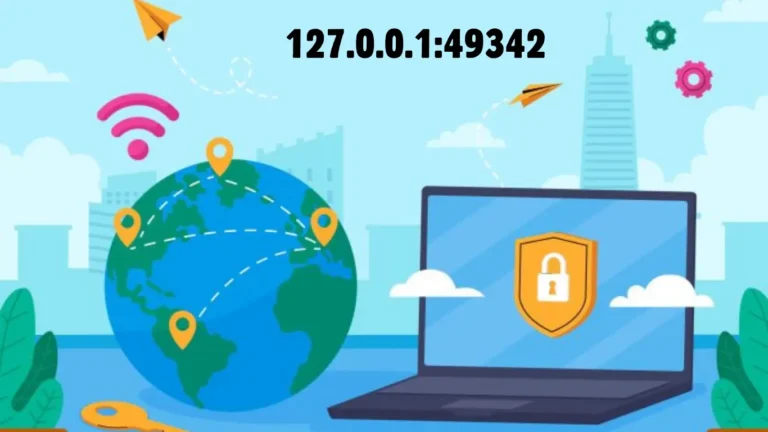What is a Local Development Environment?
A local development environment lets you build and test websites or apps on your own computer. The address “127.0.0.1” (localhost) with ports like 49342 creates a private space where you can work on your projects before putting them online.
Basic Concepts: Localhost and Ports
Understanding Localhost (127.0.0.1)
Think of localhost as your computer’s home address. When you type 127.0.0.1:49342 in your browser, you’re connecting to a program running on your computer through port 49342. This setup helps you:
- Test websites and apps
- Run development servers
- Fix code problems
- Work with local databases
- Check your work before publishing
How Ports Work
Ports are like different doors to your computer. Here’s what you need to know:
- Your computer has ports numbered 0 to 65535
- Common ports for development: 3000, 8080, and 49342
- Each program needs its own port
- Two programs can’t use the same port
Setting Up Your Work Environment
What You’ll Need
1. Basic Tools
- A web server program
- A code editor
- Version control (like Git)
- Browser tools for developers
2. Extra Programs
- Database software
- Testing tools
- File management tools
Setting Things Up Right
Keep these points in mind when setting up:
1. Safety Steps
- Use good passwords
- Keep your software updated
- Back up your work
2. Making Things Run Well
- Check your computer’s resources
- Set up your servers properly
- Keep track of which ports you’re using
Fixing Common Problems
When Ports Don’t Work
If you get port errors:
- Look for programs using the port
- Close programs you don’t need
- Pick a different port
- Check your settings
Connection Problems
When things won’t connect:
- Make sure your server is running
- Check your firewall
- Double-check port numbers
- Look at your setup files
Making Development Easier
Using Docker
Docker helps you:
- Keep projects separate
- Share setups with others
- Move projects between computers
- Set up quickly
Working with Multiple Sites
You can work on several sites at once by:
- Using different ports
- Setting up different web addresses
- Keeping projects organized
- Testing different parts
Testing Your Work
Basic Testing Steps
1. Testing Parts
- Check each piece works
- Make sure things work together
- Test how fast things run
- Check for problems
2. Browser Testing
- Test in different browsers
- Check on phones and tablets
- Make sure it looks right
- Check loading times
Making Your Work Better
Using Version Control
Good habits for saving work:
- Save changes often
- Keep different versions
- Work with others properly
- Test automatically
Getting Ready to Launch
Before putting your site online:
- Check all settings
- Update your database
- Make files smaller
- Check security
Helpful Tools
Basic Tools You Need
1. Command Line Programs
- Terminal program
- Basic commands
- Process manager
- Network tools
2. Development Programs
- Code editors
- Database tools
- Testing programs
- Problem-solving tools
Common Questions
What’s the point of localhost:49342?
It’s an address on your computer where you can test websites and apps before putting them online.
What if two programs want the same port?
You’ll need to close one program or change the port number for one of them.
Is it safe to work on localhost?
Yes, because only your computer can access it. Still, use good security habits.
Can I work on multiple projects?
Yes, just use different port numbers or set up different local web addresses.
Wrapping Up
Working with localhost (127.0.0.1:49342) is a key part of making websites and apps. Setting up your computer properly helps you work better and faster.
For beginners and experienced developers alike, knowing how to use localhost and manage ports makes development work much easier. Keep your tools updated, follow good security practices, and organize your work well.
Regular updates, good security, and an organized workspace will help you create better projects. With these basics covered, you can focus on writing good code and building great websites and apps.

